Sequels are always a fickle thing, especially for great games that set the bar for a particular genre. Cities Skylines 1 is a monolithic city-builder even eight years after release. It reset the bar for what city-builders could achieve. It filled the metropolis-sized void left by Sim City, growing into something truly grand across its lifespan and whopping 62 DLC and content packs that made the game even better. That’s not to mention the hundreds of mods created by the community that worked in concert to make CS1 a modern classic.
Indeed, Cities: Skylines 2 has a lot to live up to out of the gate. For long-time players like me, there’s a lot of expectation for what’s been dubbed “the most advanced city sim ever created” by publisher Paradox Interactive. And perhaps it’s a bit too much pressure for the sequel. In short, Cities Skylines 2 feels more like Cities Skylines 1.5. It’s a half-step in the right direction, though still a lot of fun to play.
Cities Skylines 2 Review: Little Big Town
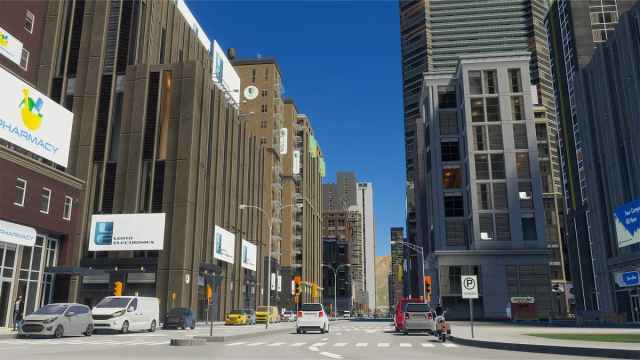
There are two things I want to acknowledge before we go any further: my PC and Paradox’s acknowledgment that CS2 doesn’t meet internal performance standards quite yet — even at release.
My PC is a potato, coming in at the low end for the Cities Skylines 2 system requirements. I’m running an ancient GTX 1080 4GB with an i7-7700K and 32GB of DDR4 RAM. While I considered upgrading my rig just for this review, I ultimately decided to see how the game would run on suboptimal hardware. Paradox’s statement regarding “the state” of CS2 prior to release further cemented that decision.
For those of you concerned that Cities Skylines 2 might not run on your PC, you should only be half-worried (maybe even only a quarter worried) if all you want to do is actually play the game — or do so until you can upgrade and see CS2 in its full glory. Though not ideal, I was able to run the game at 1080p medium settings and get a relatively solid 30fps. There were moments when that would invariably dip, but I was able to enjoy building my small town into a metropolis comfortably at the sacrifice of graphic fidelity and LoD.
As expected, I wasn’t able to see into individual buildings and watch the silhouettes of Cims go about their routines behind closed doors as some previews have mentioned. I wasn’t able to return the sleek detail shown in trailers and from YouTubers like Biffa. And I wasn’t able to get nice, clean lines when looking down on my city from on-high. But closer in, things looked fine and ultimately, I felt things ran pretty solid overall.
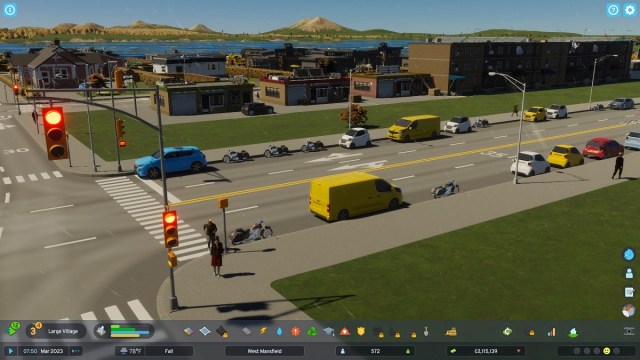
Cities Skylines 2 improves upon the CS1 base game, but perhaps not exactly as expected. There’s much more granularity in many of the game’s systems. Ranging from the ability to change taxes per Cim income bracket and business production type to the ability to see traffic globally and by way of street-by-street volume and flow graphs, we theoretically have more control over municipalities in vanilla.
Air pollution has been added, making airflow one of the very first things to check when starting a city. Powerlines can be placed underground, and all roads now run power and water lines by default, eliminating the need to run them to new areas separately. There’s also a ground-water pumping station to supplement stations placed along rivers and lakes.
Many service buildings are modular and can be upgraded to provide Happiness or Wellness buffs or add extra vehicle capacity. And, in an addition I absolutely love, area footprints for things like landfills and farms can be manually adjusted within a certain radius, making for better, more efficient use of the land.
In a nice nod to Sim City, outside connections for road, rail, sea, and air have been added (alongside nice neighboring city names) to the edge of each of the game’s 10 launch maps. You can now export and import electricity, water, and sewage, and other cities will send garbage trucks and hearses if you don’t construct those associated service buildings. Each city starts with an outside road connection, with others available as you expand.
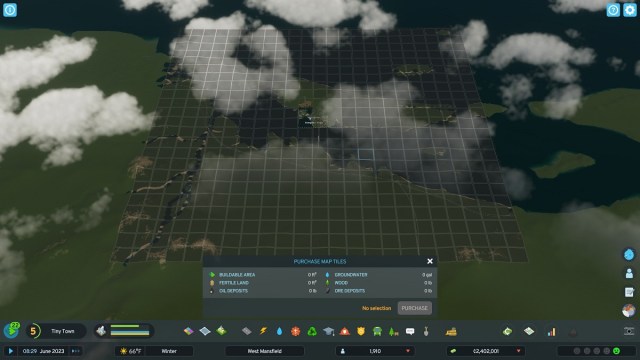
There’s been a lot of discussion about the map size in Cities Skylines 2. In vanilla, it’s much bigger than the one in Cities Skylines. Each map is a 23×23 grid. There are 529 total squares that can be purchased by accruing Expansion Permits by reaching new Milestones. To create new outside connections beyond road and power services, you’ll need to buy tiles to the edge of one side of the map, running pipes there or connecting to rail hubs, for example.
Just because the map is that big doesn’t mean you’ll want to buy every tile; some contain ragged, mountainous terrain or are part of a vast ocean. However, the buildable areas for each map play into how it feels Paradox wants you to play Cities Skylines 2. In my time with the game, I always felt that many of my CS1 strategies were being tested constantly and that Paradox really wanted me to use more map tiles earlier in the game than I felt like I should.
Instead of building dense city blocks, even for low-density residential, CS2 wants you to spread things out, creating true suburbs and city centers. Tiles don’t need to abut when you purchase them. Though, as the game clarifies, it makes managing things easier if they do.
The building unlock system has also been changed, relying on XP points gained from various actions instead of pure population-based Milestones. This allows you to go down certain paths, such as fossil fuels or green energy, without being forced to unlock other buildings first. Overall, it’s a fine system that I think neither enhances nor diminishes the gameplay.
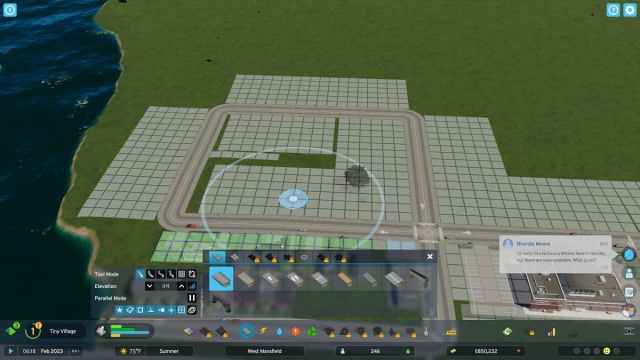
Zoning is different this time around, as well. Instead of just three meters for residential, commercial, and industrial, you now have individual bars for low-density residential and medium-density residential, for example, and a separate bar for offices. Zoning blocks is essentially the same, but now there are meters to tell you if certain zones are good fits along certain road types or near other zones. For example, streets turn red if you try to put low-density residential near medium-density plus commercial zone city blocks.
Additionally, there are other new strategies at play. Commercial zones need customers, and building residential before commercial has more than the obvious benefits. CS2 provides a customer-density overlay when placing commercial in areas with medium- to high-density residential areas, letting you see where the most customers are. It mostly works, though I still consistently get the dreaded “not enough customers” icon bobbing above businesses within these zones. My strategy so far is just to bulldoze them to the ground…
Zoning can get strange, too, because right now, Cities Skylines 2 roads are a little funky. There are regularly strange gaps along roadsides or jagged, disconnected blocking between areas that should append nicely, as they do in CS1. It leads to some truly ugly spacing and design at times that can’t always be fixed.
On top of that, there are several building types per zone (not related to the ability to change between American and European designs on a global level) that randomly populate zone blocks. It doesn’t matter how large they are. Specifically, in a block set zoned five blocks deep, there can be buildings next to each other five blocks deep or two blocks deep. Like so many other things in Cities Skylines 2, it lends a sense of realism to the game, but it makes my brain hurt when I want tidy neighborhoods and boroughs — and landscaping doesn’t make it look any cleaner.
I’m also not a huge fan of the opacity placed over the map when zoning, specifically commercial. It makes the individual blocks hard to see when both placing new areas or rezoning others.
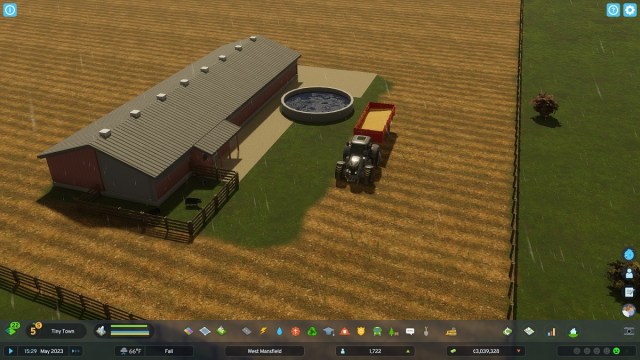
Remember how I said Cities Skylines 2 improves upon the CS1 base game, but perhaps not exactly as expected? There are some glaring omissions here, as well. Specifically for many of the mechanics and systems implemented from CS1 DLCs and the modding community.
For example, industries aren’t as robust as they in the CS1 Industries expansion. Forestry is a single building now, alongside farms and animal husbandry. I especially appreciate the impressive detail of farms, but forestry buildings are comparably bland-looking. The production chain menus have been streamlined but perhaps too much so, losing some detail found in the DLC — and found in droves elsewhere in CS2.
Frustratingly, no real park management can be found anywhere in Cities Skylines 2. There are the traditional parks, including more expansive sports parks (which is a nice touch), and there’s a park maintenance depot, but I’m left wondering what happened to all the mechanics from the Park Life DLC.
Road management is better on a vanilla level, letting you place individual stop lights, stop signs, no-turn signs, and even crosswalks. However, control here doesn’t hold a candle to the infamous traffic manager mods created by the Cities Skylines community. Though, I very much do love the new parallel road and grid road tools that allow you to build two roads side by side at the same time and create wide, interconnected road grids, respectively.
Education is another interesting area. On the whole, all service buildings reach a much larger area than they did in CS1. You won’t have to build five elementary schools to cover a few thousand people. But graduation rates are abysmally slow. One in-game month is 24hrs on the in-game clock. And when it takes elementary students six months to graduate and high-school students 10 months to graduate, it takes a long time to change the composition of your citizenry.
Yes, there are building upgrades, but they only marginally decrease that time. If you don’t place schools early on in a city, you could find yourself at a disadvantage quickly.
Cities Skylines 2 Review — The Bottom Line

Pros
- Deep and effectual taxation system.
- Granular, more efficient utility management system.
- Outside connections and the ability to import and export more services.
- Being able to change area footprints for landfills and farms.
- Being able to choose building unlock paths in the development tree.
- Modular building upgrades that add useful buffs and capacity increases.
- Variety of large, unique maps to choose from.
- Disasters baked in.
Cons
- Chirper, calm down, bud. Seriously.
- Missing many systems popularized in CS1 DLCs and community mods.
- Lack of truly deep traffic and road management systems.
- Road grids regularly create strange zoning grid patterns.
- Bad opacity overlay for commercial zoning.
- Frustratingly slow education system.
- Unclear Cim wealth system and commercial needs system.
My overall impressions of Cities Skylines 2 at launch are that it’s a fun game that makes some head-scratching decisions at times. It doesn’t feel like a whole step forward, leaving a lot by the roadside on its journey to 2.0. Invariably, there will be loads of DLC, and modding is coming sometime after launch. This city will grow, just as our old hometown did over time. Though I’m having a lot of fun with Cities Skylines 2 and learning these new city streets, I can’t help but long for my old stomping grounds while playing it. At least right now.
[Note: Paradox Interactive provided the PC copy of Cities Skylines 2 used for this review.]







Published: Oct 19, 2023 12:11 pm